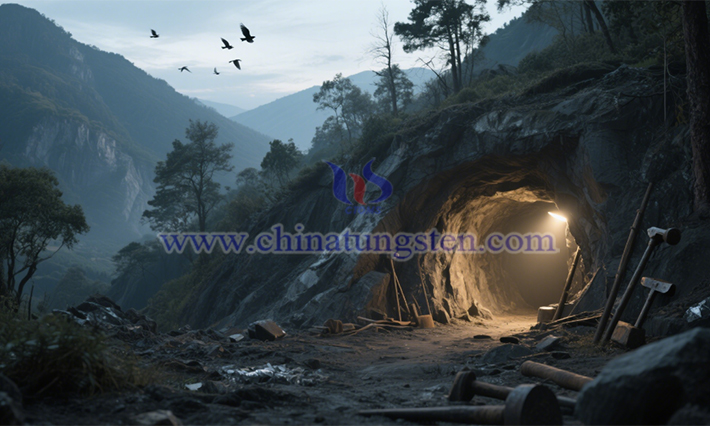Inner Mongolia Shamai Tungsten Mine: Wolframite Metal Content Surpasses 40,000 Tons
- Details
- Category: Tungsten's News
- Published on Tuesday, 20 May 2025 18:43
Recently, the 514 Geological Brigade of the North China Geological Exploration Bureau announced that the resource verification report for the Shamai Tungsten Mine project, implemented by its Mineral Exploration Institute, has successfully passed the expert review by the Ministry of Natural Resources. Exploration revealed the immense potential of the Shamai Tungsten Mine, with resource reserves reaching a new high and the discovery of associated minerals like silver. The total identified wolframite metal content exceeds 40,000 tons, with newly added resources reaching the scale of a medium-sized tungsten mine. This achievement holds significant importance for China's tungsten resource reserves and related industrial development.

The Shamai Tungsten Mine project is located in the northeastern part of Xilingol League, Inner Mongolia Autonomous Region, on the western foothills of the Greater Khingan Range, 40 km from the China-Mongolia border. Initially discovered in the 1970s, the 109 Geological Team of the Inner Mongolia Geological Exploration Bureau conducted detailed surveys and released a reserve report, classifying the mine as medium-sized.
The Shamai Tungsten Deposit is situated at the easternmost segment of the Central Asian giant suture zone, with widespread greisenization in the deposit. Tungsten ore bodies, primarily controlled by NW-trending fault structures, occur as wolframite-quartz veins within the Yanshanian Shamai pluton and Devonian host rock strata. The mineralization stages, from early to late, include: quartz-topaz stage (I), greisen-wolframite stage (II), and late silicification stage (III).

Stable isotope studies indicate that the mineralization fluids of the Shamai Tungsten Deposit primarily originate from magmatic water, with atmospheric water mixing in during the late mineralization stage. The sulfur source is linked to Early Cretaceous magmatic-hydrothermal systems or deep mantle-derived magmas, with some contribution from strata sulfur. Researchers classify the Shamai Tungsten Deposit as a post-magmatic hydrothermal tungsten deposit. Yanshanian intrusions brought mineralizing materials from depth, undergoing processes like magma differentiation and fluid-melt interaction, forming a regional magmatic-hydrothermal mineralization system. Fluid immiscibility is identified as the primary cause of the decomposition of tungsten-bearing complexes, leading to eventual mineral precipitation.
- Chinatungsten Online: www.chinatungsten.com
- CTIA GROUP LTD: en.ctia.group
- Tungsten News & Price: www.ctia.com.cn
- Molybdenum News & Price: news.molybdenum.com.cn
- Tel.: 86 592 5129696; Email: sales@chinatungsten.com